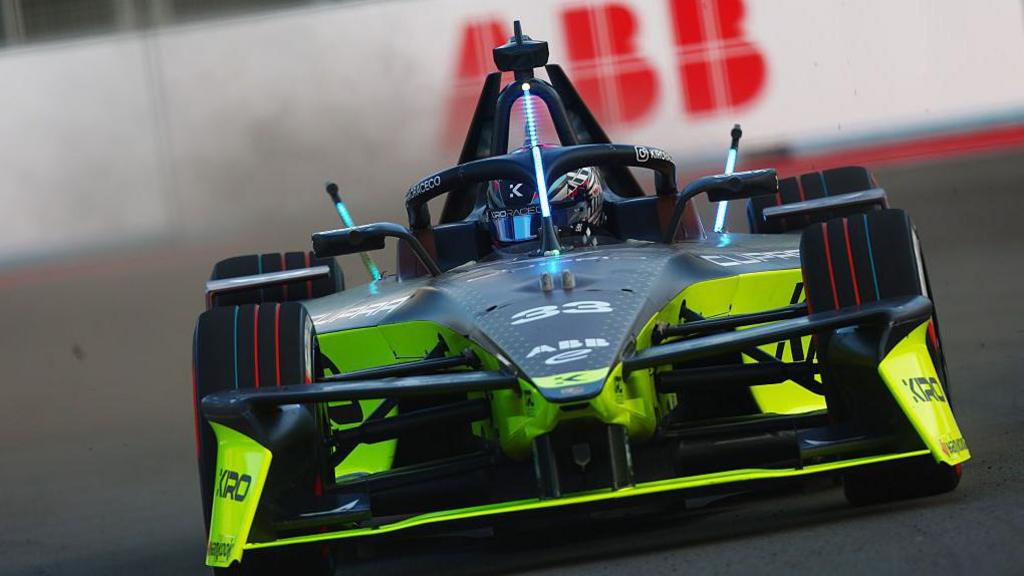Formula E says its “ultra-fast” pit boost technology could be recharging regular electric vehicles in “five years, max”.
The system gives cars a 600KW 10% energy shot in 30 seconds during pit stops.
Julia Palle, vice-president for sustainability with the all-electric racing series, told BBC Sport it could be rolled out to the real world.
“I would not think it’s going to take more than five years, max, before we see a fast charger in the mainstream on our streets,” said Palle. “Maybe in the big cities, the likes of London, and then being deployed progressively in most other countries.”
Pit boost was introduced during the most recent season of Formula E, in which the drivers’ title was won by Britain’s Oliver Rowland of Nissan.
Palle sees a “lack of infrastructure” as a major problem with electric vehicles as a mainstream mode of transport.
She described the pit boost advance as an “ultra-fast solution”.
“What Formula E cars do in the garage is the 30-second stop to recharge 10% of the battery capacity, which is absolutely mind-blowing. It’s a great part of the show, but it also sends a strong message to EV [electric vehicle] drivers and the rest of the community, that this technology can be deployed on the streets in the near future.

Formula E’s need to innovate
The sport, which won the Pioneer award at the BBC Green Sport Awards this week, began in 2014.
Drivers were initially required to jump from one generic car to another halfway through a race because of limited battery capabilities.
Now cars are in their third generation and are capable of having powertrain components tweaked and developed by the competitors, such as Nissan and Jaguar, to aid the ability of manufacturers to develop technology they can apply to their road vehicles.
Paolo Aversa is a professor of strategy at King’s College London, with close ties to motorsport. He says Formula E needs a big technology transfer moment.
“The whole point of motorsport is creating a competition for technologies that actually help the world advance,” Aversa said.
“The [Formula E] model still needs refinement – at the moment the amount of the technology to be spun out to end up in road cars has been limited.
“This is because to limit the cost of entry for new teams and manufacturers, the first few years they used standard cars, meaning there was no real technological development, no mechanism for creating competition of new technology, like there is in Formula 1.
“They have since started opening up innovation potential for teams – more and more components can be customised and implemented, and so this is when the competition becomes interesting. Truly then it can become a challenge which can accelerate the rate of innovation, such as batteries and charging stations.
“Formula E are on the right route. The big challenge is to come up with some bold technical innovation which will reshape transportation.
- 1 day ago
Making sense of reducing the footprint
One of the key reasons for Formula E’s success at the Green Sport Awards concerned the sport’s approach to reducing its carbon emissions, in a sustainability industry which can sometimes offer confusing messages on how a green an organisation can be.
In 2021, Formula E was the only sporting organisation in the world to have its carbon footprint targets validated by the Science Based Targets initiative (SBTi).
“The SBTi validating your reduction objective relates with what climate science says and validates it as basically realistic and achievable,” says Palle. “Our objectives are to reduce carbon emissions by 50% by 2030.
“We also achieved the BSI (British Standards Institution) verification, which was very important for us because there’s a lot of discussion around net zero claims.
“Any claim today of being net zero is basically false – no-one can be net zero today and we have to change our understanding of net zero, which is a part of the journey.
Related topics
- Motorsport
Source: BBC

Leave a Reply